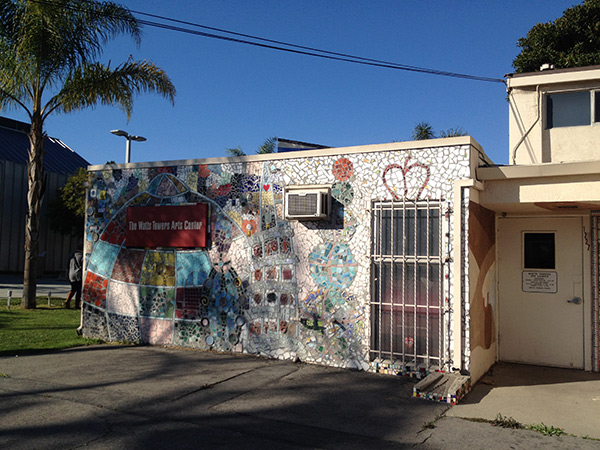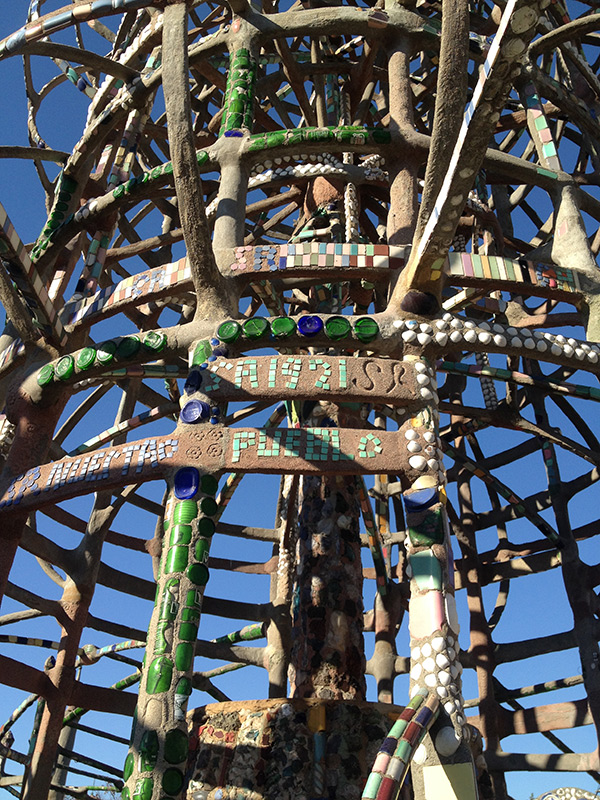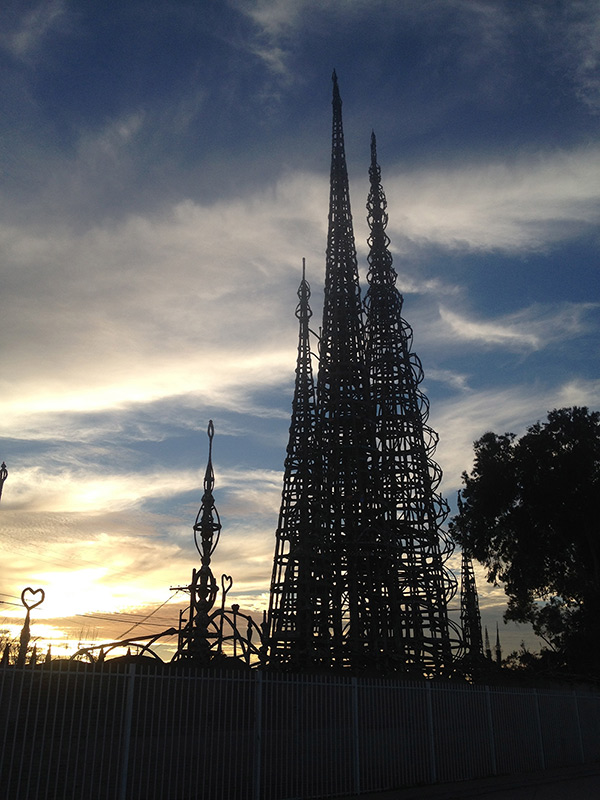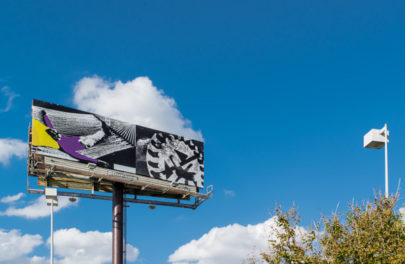L.A.’s Watts Towers are a reminder not only of the remarkable man who made them, but of the creative life in all of us

Watts Towers have a near-mythic origin story. Built by one man—using only his two hands and the simplest of tools—over the course of 33 years, the towers are a monument to ingenuity, artistic vision, and the sheer force of physical labor. But they also represent more than the story of their fabled creation. The towers tell stories tied to the history of immigration, the neighborhood, and the cultural life of the surrounding community.
The towers are the creation of Simon Rodia (1879–1965), who immigrated to the United States from Southern Italy as a child at the tail end of the 19th century. After working in the coalmines of Pennsylvania he moved to the Bay Area and then Los Angeles, where he earned a living in construction.
Rodia started his project with a strong vision in mind; he searched for the right property before settling on a triangle-shaped plot in the neighborhood of Watts. He toiled from 1921 to 1954, building each tower by bending scrap metal rods and pipes, covering them with mesh and mortar, and then embedding pieces of glass, dishes, mosaic tiles, pottery, sea shells, and other decorative objects into the wet cement. The tallest spire reaches just over 99 feet, a particularly impressive feat given that Rodia did not use any rivets, bolts, welds, or even scaffolding.
The materials speak to the era in which he was building. 7-Up bottles supplied the green glass, while Milk of Magnesia provided the blue. Even objects with seemingly little aesthetic value became vehicles for decorative motifs; the flower-like shapes impressed throughout the towers came from the head of a garden hose.



The towers are a monument to Rodia’s memories of Italy and his immigration to America. The contour of the property echoes the shape of the ship on which Rodia sailed across the Atlantic, and he built a smaller ship replica and a ship’s wheel within the towers. The space is also filled with his remembrances of Italy, such as the tower from a saint’s festival and a goldfish pond. This evocation of a personal immigration story is particularly fitting for Watts, as it has historically been a landing place for immigrants to Los Angeles—including those from Latino, German, Italian, Japanese, Chinese, and African American communities.
While the construction of the towers seems like a mythical act unto itself, the fact that they are still standing is quite possibly even more extraordinary. After completing the towers, Rodia gave the property to a neighbor and relocated to Martinez, California. He never returned and resisted the attention of journalists and others with growing interest in his monument. In 1959 the city deemed the towers a public safety hazard and decided to tear them down. After visiting the towers and learning of their imminent destruction, two young filmmakers formed the Committee for Simon Rodia’s Towers in Watts and devised a stress test to prove the towers could withstand winds reaching up to 80 miles per hour. The city acquiesced. This feat seems exceedingly rare given the propensity for tearing down unconventional art spaces today (the recent demise of 5Pointz in Long Island City, New York, being on such example). The towers were unharmed during the Watts Riots in 1965, which occurred just three weeks after Rodia’s death.
Rodia’s towers became the jumping-off point for more creative endeavors. In 1962 the Committee formed the Watts Tower Cultural Center, which named Noah Purifoy as its first director. He advocated for the credo of art as process, not just object—a philosophy clearly in keeping with the example set by Rodia—saying: “Within [each person] there’s a creative process going on all the time and it’s merely expressed in an object called art. One’s life should also encompass the creative process. We were trying to experiment with how you do that, how you tie the art process in with existence.” (Richard Cándida Smith, “Learning from Watts Towers,” Oral History Autumn 2009.)

Eventually the center morphed into The Watts Towers Art Center, and today it is a hub of cultural life within the community. There are art galleries, music lessons, and even a garden with turtles milling about their pond.
Although decades have passed and the iconic status of the towers has surpassed anything the creator might have imagined, Rodia’s presence still lingers. At the door leading to his former home within the towers there are two mailboxes marked with the street address, 1762, and the letters S R, his initials. But Rodia always saw the towers as belonging to more than just himself. While they are commonly known as Watts Towers, Rodia always referred to them by the name emblazoned over the entrance, Nuestro Pueblo, Our Town.


The Getty Gadabout: A Peek at Art Locales in L.A. is an occasional series by arts writer Sarah Zabrodski spotlighting intriguing places to see art in Los Angeles.




Comments on this post are now closed.
Trackbacks/Pingbacks